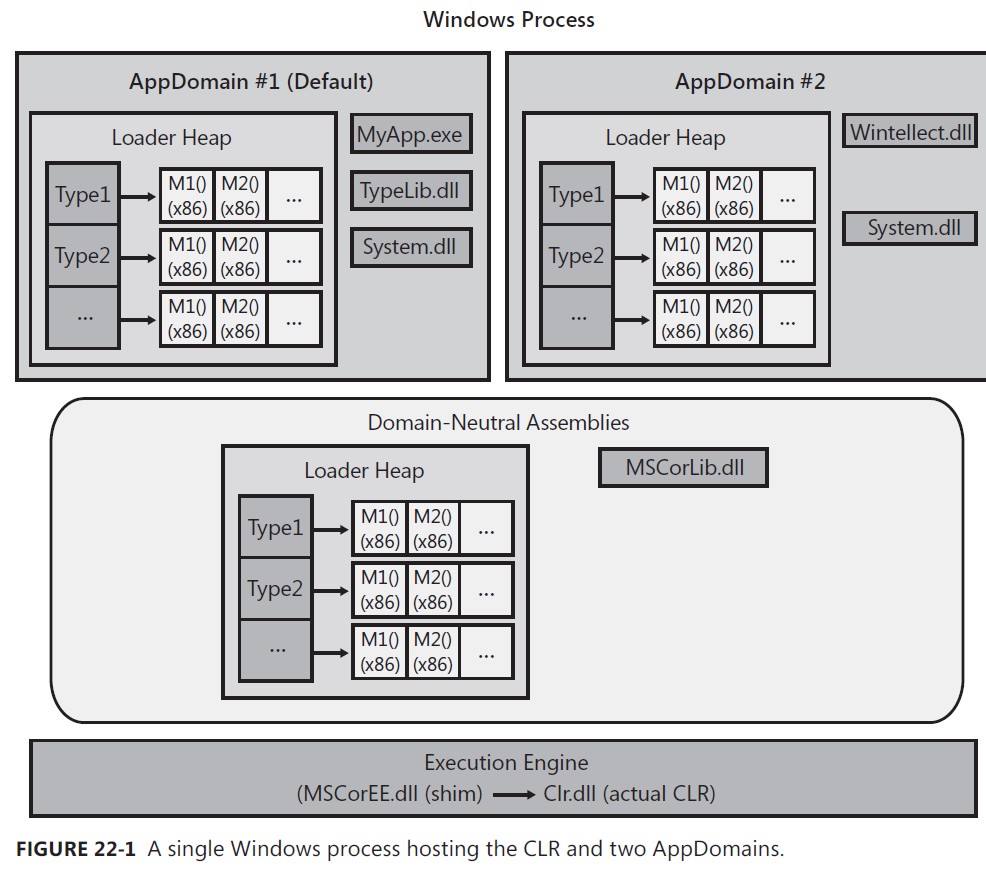
AppDomain Unloading
To unload an AppDomain, you call AppDomain’s Unload static method.This call causes the CLR to perform a lot of actions to gracefully unload the specified AppDomain:
- The CLR suspends all threads in the process that have ever executed managed code.
- The CLR examines all of the threads’ stacks to see which threads are currently executing code in the AppDomain being unloaded, or which threads might return at some point to code in the AppDomain that is being unloaded. The CLR forces any threads that have the unloading AppDomain on their stack to throw a ThreadAbortException (resuming the thread’s execution). This causes the threads to unwind, executing any finally blocks on their way out so that cleanup code executes. If no code catches the ThreadAbortException, it will eventually become an unhandled exception that the CLR swallows; the thread dies, but the process is allowed to continue running. This is unusual, because for all other unhandled exceptions, the CLR kills the process.The CLR will not immediately abort a thread that is currently executing code in a finally block, catch block, a class constructor, a critical execution region, or in unmanaged code. If the CLR allowed this, cleanup code, error recovery code, type initialization code, critical code, or arbitrary code that the CLR knows nothing about would not complete, resulting in the application behaving unpredictably and with potential security holes. An aborting thread is allowed to finish executing these code blocks and then, at the end of the code block, the CLR forces the thread to throw a ThreadAbortException.
- After all threads discovered in step 2 have left the AppDomain, the CLR then walks the heap and sets a flag in each proxy object that referred to an object created by the unloaded AppDomain. These proxy objects now know that the real object they referred to is gone. If any code now calls a method on an invalid proxy object, the method will throw an AppDomainUnloadedException.
- The CLR forces a garbage collection to occur, reclaiming the memory used by any objects that were created by the now unloaded AppDomain. The Finalize methods for these objects are called, giving the objects a chance to clean themselves up properly.
- The CLR resumes all of the remaining threads. The thread that called AppDomain.Unload will now continue running; calls to AppDomain.Unload occur synchronously.
shadow copying
A fantastic feature of ASP.NET is that the code for a website can be changed on the fly without shutting down the web server. When a website’s file is changed on the hard disk, ASP.NET detects this, unloads the AppDomain that contains the old version of the files (when the last currently running request finishes), and then creates a new AppDomain, loading into it the new versions of the files. To make this happen, ASP.NET uses an AppDomain feature called shadow copying.